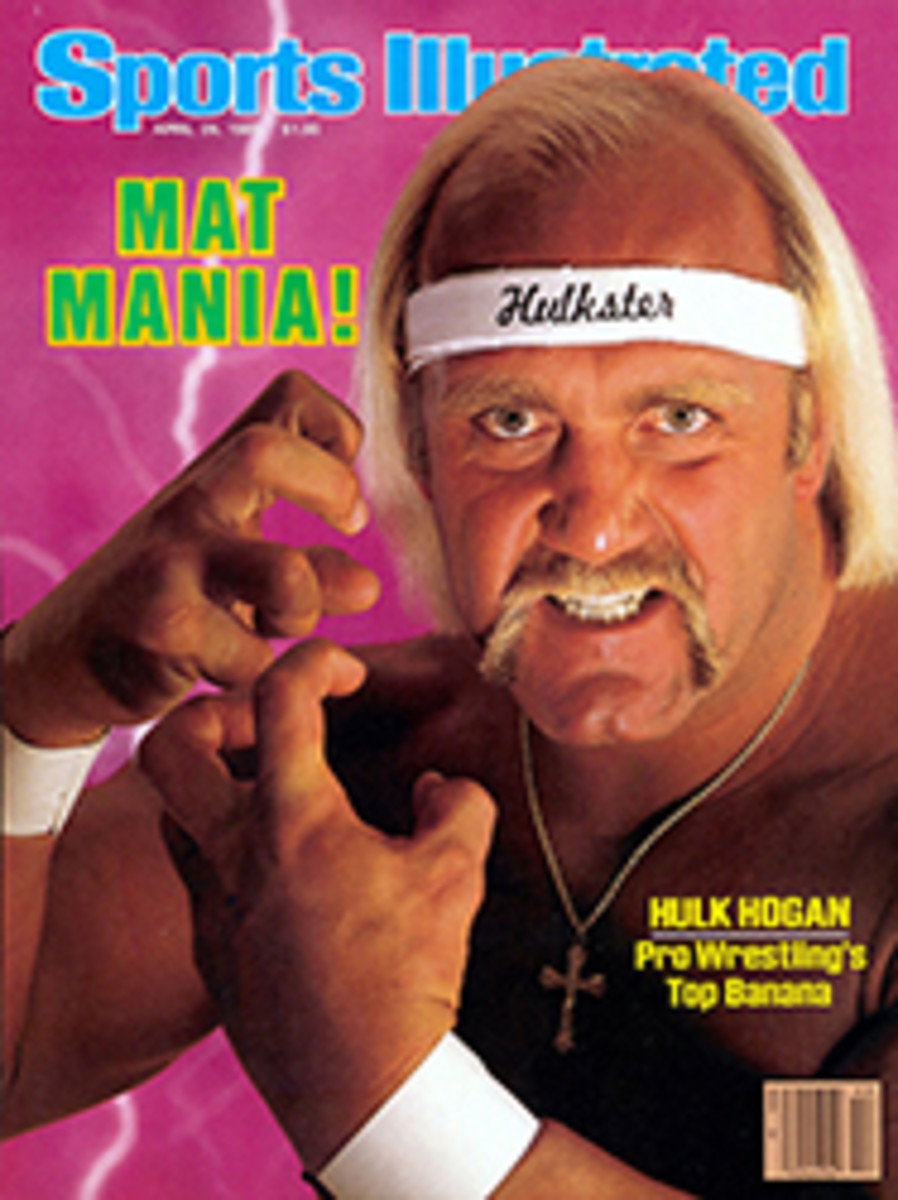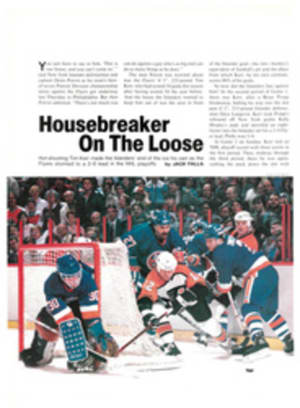
ON STURDY, LIGHT OFF-ROAD BICYCLES, RACERS CAN HANDLE TOUGH TERRAIN
Once, when Harry Truman was President and Joe Louis ruled the ring, bicycles were bicycles the way men were men—plain and strong. In those days, you could ride bikes over curbs. They had fat tires and wide, upright handlebars. So what if they had only one speed? Pushing 46 pounds of rubber and steel up a hill would have been darned good exercise—if exercise had been invented yet. But then the '50s brought lighter, three-speed English bikes, and the '60s and 70s brought 21-pound 10-speeds, with down-turned handlebars and skinny tires, bikes that could go, even up hills, but not over curbs. Then, as the '70s waned, there was another development. Out of hilly northern California came all-terrain bikes. The ATBs have 18 speeds, weigh 25 to 32 pounds, and are something of a throwback: they are plain and strong, with fat tires and upright handlebars, and you can ride them over curbs. But you can also ride them up hills, and they are light enough to carry up stairs.
As sales have increased, so has the number of all-terrain bicycle races. ATB hotshots go at it across meadows and wallows and over craggy trails that would wreck a $1,000 10-speed. The number of races passed the 100 mark last year, and no competition did more to spread the ATB gospel than last fall's Gant Challenge, sponsored by the menswear concern. New sports prosper when fans identify with the athletes, and in the series of seven Gant races the fans—or some of them, anyway—actually became the athletes. There were two divisions: experts, professional or seasoned off-road cyclists, vying for a $500 winner's purse, who had to survive 20 laps of the roughly half-mile courses; and citizens, folks supposedly like you and me, who stepped from the crowd and went for the glory over one lap. The men's and women's citizen winners each took home a prize of a $500 Fuji.
The Seattle course was a rocky stream bed; those in Minneapolis and L.A. were characterized by hairpin turns; Chicago's was a mucky hollow; Denver's was a succession of dirt ramps that sent the cyclists flying; and Miami's was a bayside web of mangrove roots. Finally, there was the Tampa course, "the amoeba," a shapeless trail that looped treacherously across University of South Florida athletic fields through patches of deep sand and steep little slopes of soft grass, tough going even for these bikes. Still, citizen entrants seemed as drawn to this race as they were to all the Gant races. Nearly anyone could complete the .545-mile course, and all of the cyclists had dreams of winning a new Fuji.
I took a practice run over the Tampa course, and one knowledgeable observer said, "Fair speed, poor bike handling." My time was 3:51.0, and already cutting corners in my mind, I calculated, "2:49 gets the prize." But when it came time for my 35-and-over heat, reality set in. The first sharp turn lay under a three-inch-deep puddle. I slowed and took it wide; I was still game, as long as I didn't have to chance a nose dive in the mud and tire tracks on my back.
I was 15th of 20 through the turn, gained two places with fierce pedaling on a straightaway, then lost one to poor bike handling while topping a sandy knoll. With 18 speeds, you can go nearly anywhere. But it takes a while to learn how to use them, and in soft sand you have to get it right before you slow down, or you stop—completely. And you don't start up very quickly. That's how it went. I craved a breakneck ride to glory down a dizzying mountain trail. But this was flat Florida, and I finished 11th, in 3:38. At least now, though, I had some idea of what ATBs could do. I also wanted a demonstration from an expert.
The one to watch was an adventurous 32-year-old maverick from Santa Cruz, Calif. named Laurence Malone, a.k.a. Mr. Mountain Bike. The place to do so was near a spot where two telephone poles had been laid about seven feet apart across the trail for the experts' race. Malone was the first of 39 to approach the logs, and at 6'2" and 150 pounds, up on his pedals, he called to mind Ichabod Crane. But then, seemingly with no loss of speed or rhythm, his right leg whished up and over the back wheel and shot out between the bike frame and his left leg. Still in perfect tempo, he dismounted, raised the bike, ran over the logs, remounted and pedaled away. No one else did it as smoothly, but after five laps Malone was 30 yards back in second place.
He had already won four of the six Gant races, and he was undeniably skilled, but his recent drinking and training habits seemed to suggest that four wins were enough for him. "I haven't trained in three weeks," he kept saying as he drank various Piña Coladas, beers and a black Russian at dinner less than 48 hours before race time.
In 1974, Malone had discovered Cyclocross, a sort of 10-speed analogue to ATB racing, but with more running involved. One year later, he was national champion, a title he didn't relinquish until 1980. Malone's first ATB victory was in Fairfax, Calif. in 1981, over a 20-mile loop of tortuous trails and ridges, some of them so steep that he had to sit back and off his seat to keep from pitching over the handlebars. But he won, but subsequently overtrained, developing serious knee trouble. He couldn't ride, so off he went to South America, traveling for eight months in buses full of chickens. Back in California he spent the summer of '83 living in a tepee and strengthening his knee on rugged Sierra bike trails. In March 1984, he received a call from Specialized Bicycle Components, in Morgan Hill, Calif., a leading producer of top-grade ATBs, and soon he was part of the company's new five-man racing team.
Tampa was the team's last stop of the year, and on the eighth lap Malone was trading the lead with Thomas Prehn, second in this summer's national road racing championships. But this was only Prehn's second off-road race, and his inexperience showed. At least three times, near the start-finish line, he sped up and tried to pass Malone. But they were less than 100 yards from the puddle turn, and when Prehn couldn't pass, he had to brake sharply, wasting much energy. By midrace no one had a lot of that to spare. Many competitors were now riding right over the logs—clump-clump...clump-clump. "Get off—it's faster," spectators yelled, but the riders were too stiff and sore to comply.
ATB racing is more stressful to the upper body than road racing. Also, there is no pack riding or drafting, as on the road, so a more sustained effort is required. Even Malone, the most efficient of riders, was wearing down. With seven laps remaining, he rode over the logs for the first time. But he did so more efficiently than the others, and an admiring voice called out, "This guy's soooo smooth." Some 20 minutes later Mr. Mountain Bike had won his fifth Gant race. His average lap speed was 2:33.5.
Malone stood, spotted with mud, drinking beer and champagne, and talked about the satisfactions of ATB racing. His pet hate, he said, was automobiles. "Every day I ride on a road, I'm looking into the jaws of death," he said. But with an all-terrain bicycle, he said, "I go way up in the mountains, and the people I meet are amazed. They say, 'How did you get up here?' or, 'Wow, you're crazy.' That's why I love this sport."
ILLUSTRATION
DIANE TESKE HARRIS

